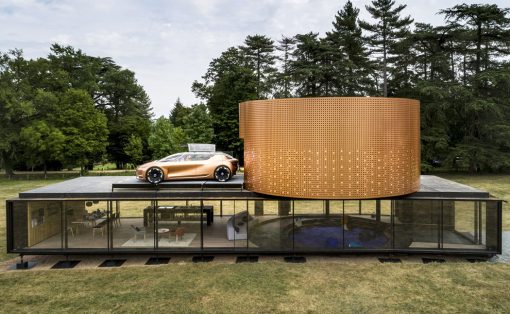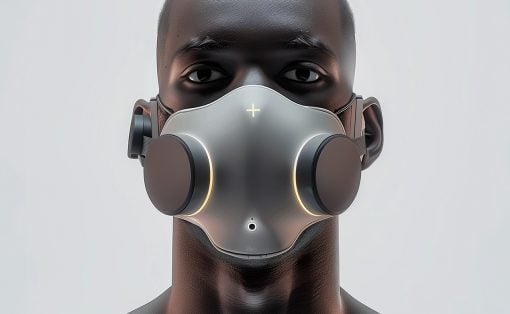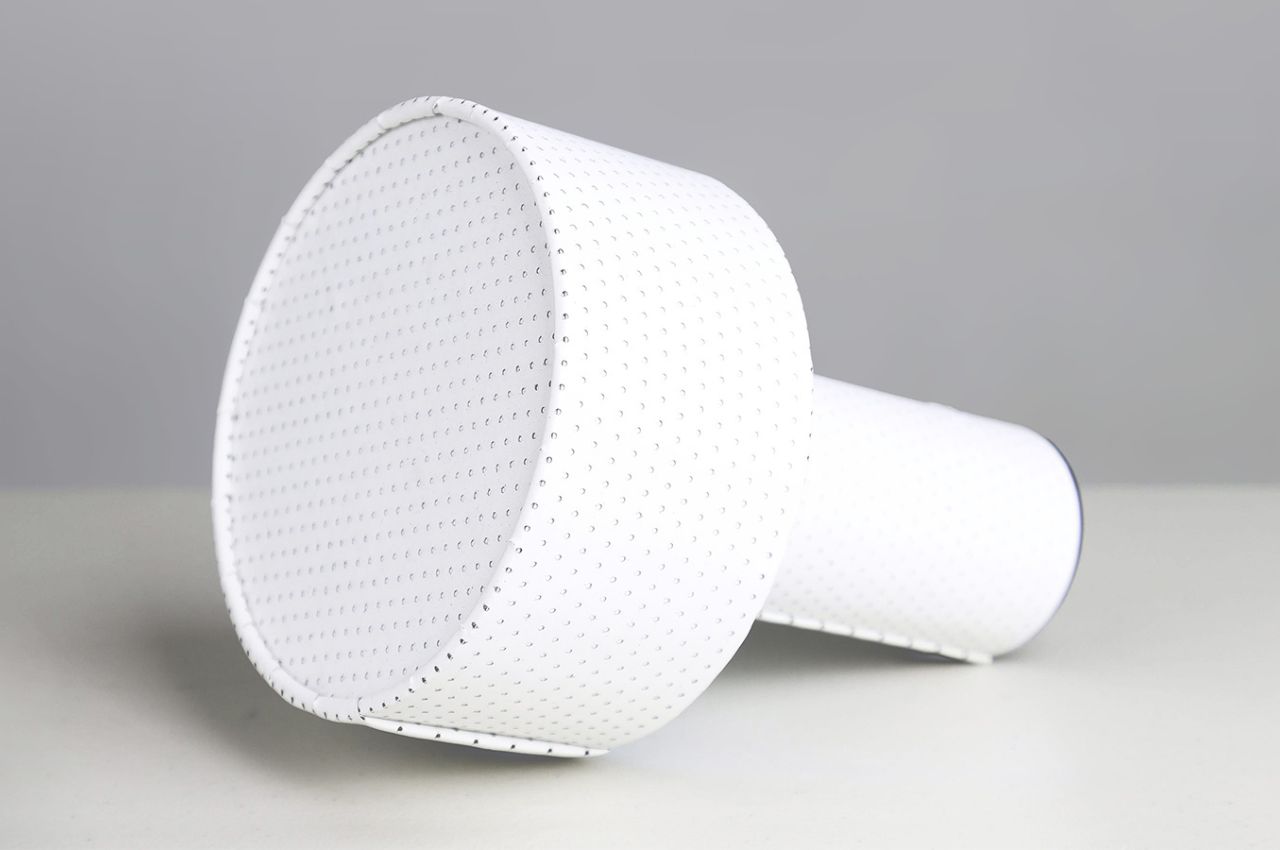
In a groundbreaking collaboration with CGV, South Korea’s leading movie brand, designer Haneul Kim has unveiled a remarkable initiative to address the environmental challenge of waste generated by discarded movie screens. These screens, often several meters long, are typically cast aside due to damage, contamination, or the dismantling of theaters. Haneul Kim’s innovative approach transforms these seemingly obsolete materials into stunning and functional lighting designs, marking a significant step towards sustainability in the design industry.
Designer: Haneul Kim
Kim’s inspiration struck when he noticed the perforations on the discarded screens, recognizing a visual similarity to aluminum perforated plates commonly found in industrial applications. This revelation led to the ingenious idea of repurposing the screens’ sound-transmitting function into a source of light emission. The result is a series of portable lamps that ingeniously utilize the small holes in the screens to emit light, turning waste into a source of illumination.
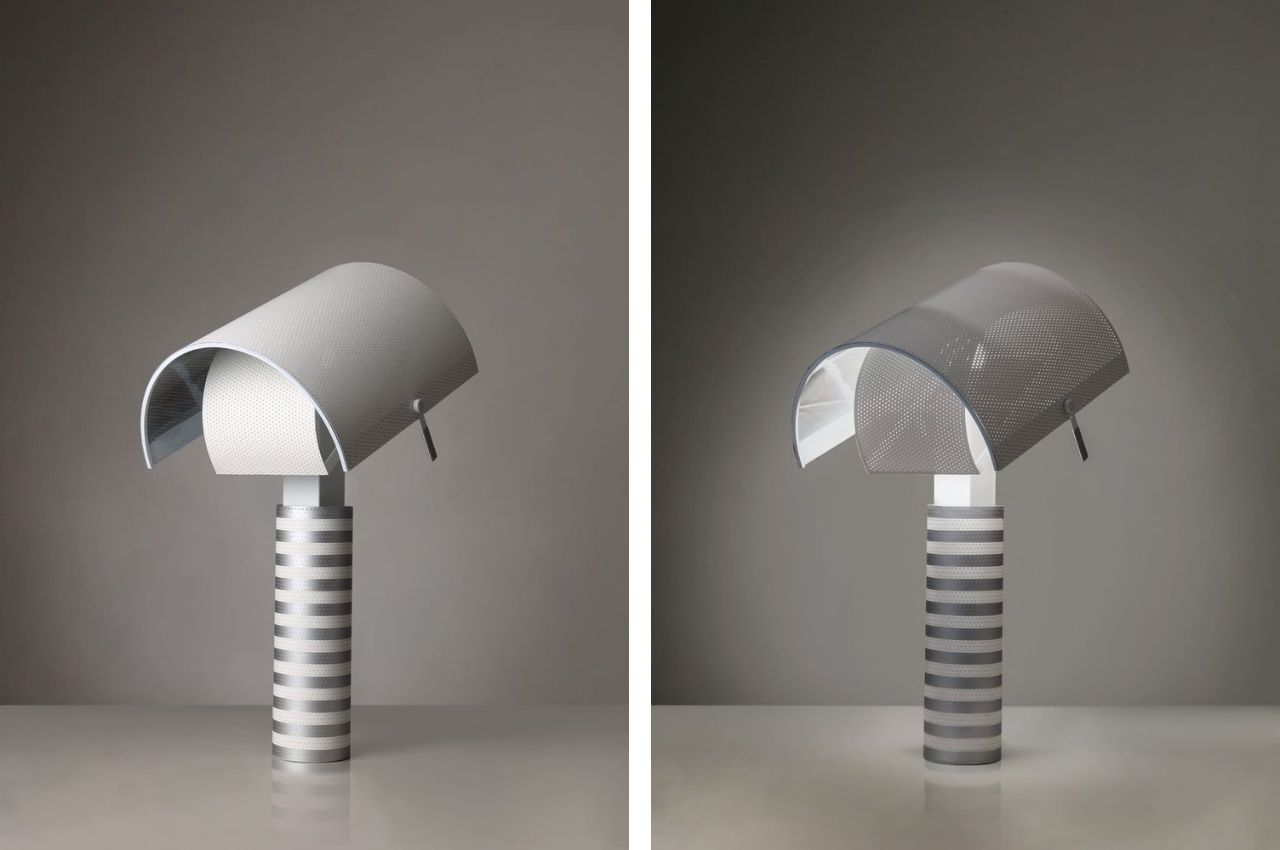
The Waste Screen Recycle project also pays homage to the legendary designer Mario Botta’s iconic shogun lamp. Known for its clean lines and geometric precision, Botta’s lamp incorporates perforations or cutouts, allowing light to diffuse elegantly. Haneul Kim’s homage work demonstrates the potential of waste screens to replace traditional lampshades, showcasing a fusion of sustainability and design aesthetics. The project not only repurposes discarded materials but also reimagines them in the context of established design classics.
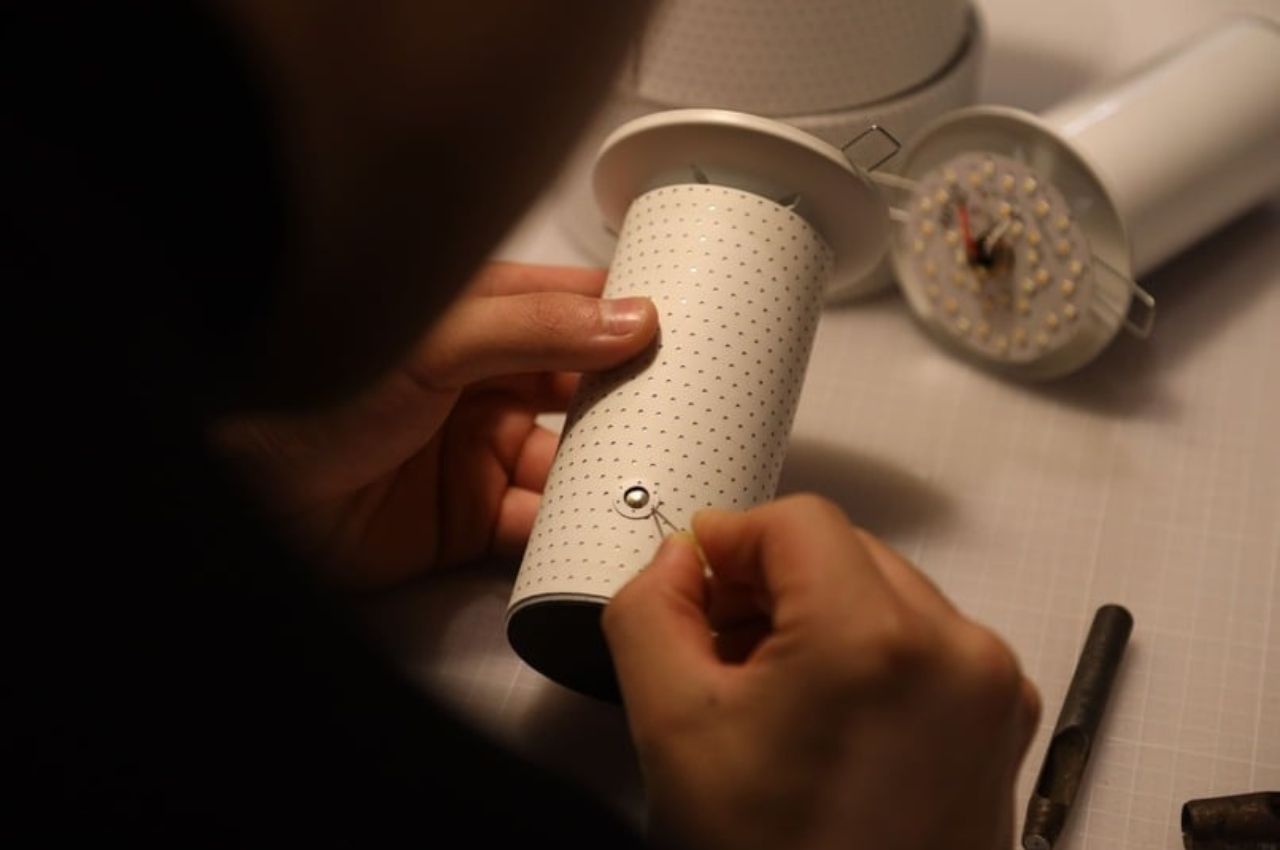
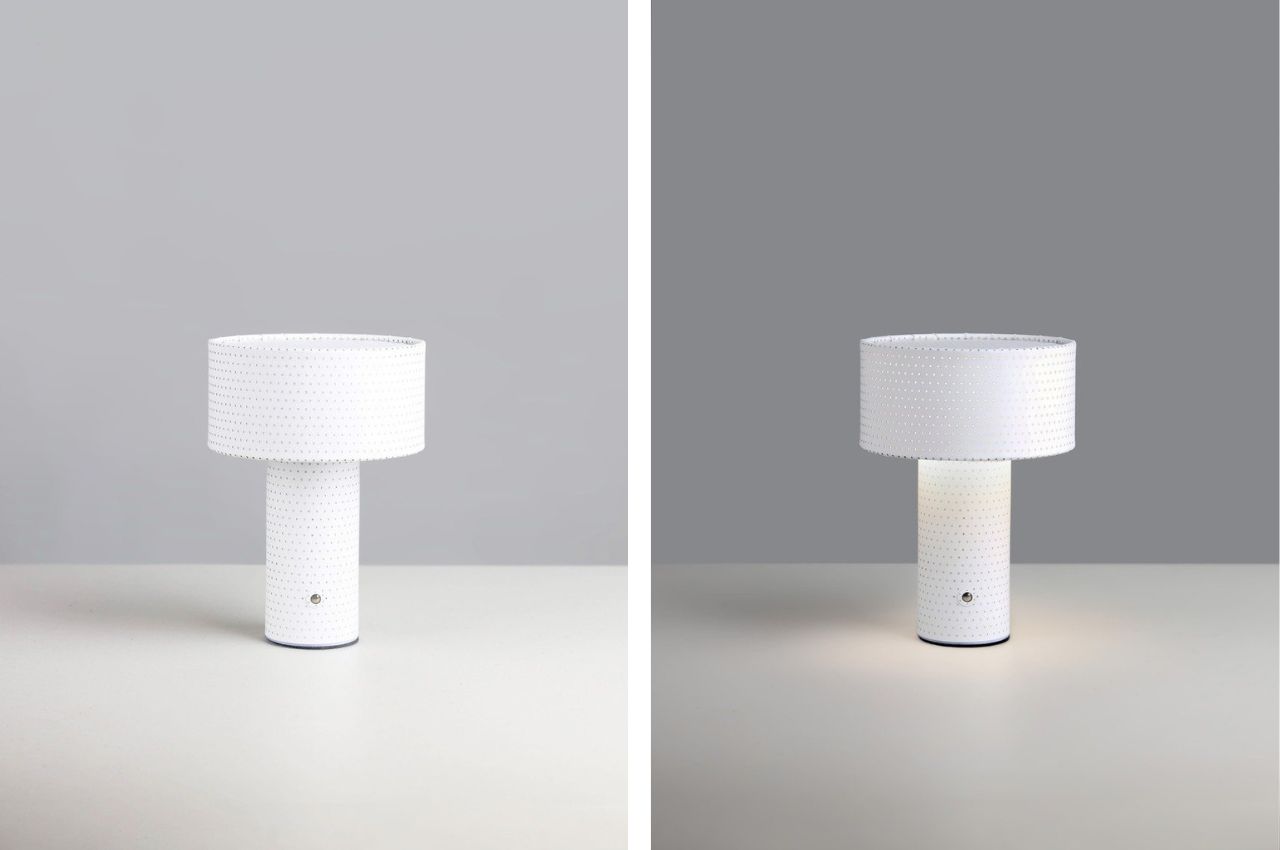
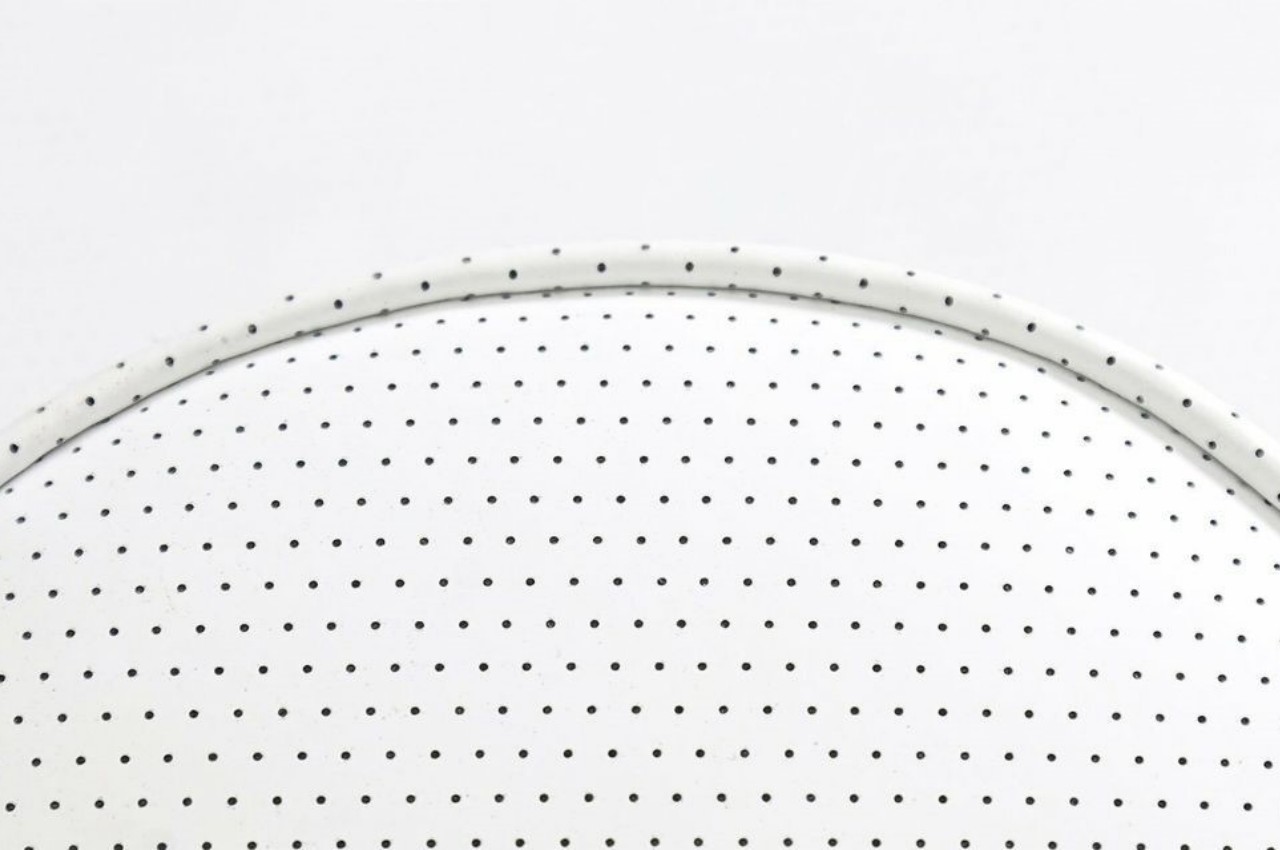
The versatility of waste movie screens is further highlighted as Kim extends the project to include furniture pieces such as tables and chairs. These pieces showcase the original patterns found in waste movie screens, adding a touch of uniqueness and character to each creation. By exploring the potential use of these screens as interior materials for the future, Kim is pushing the boundaries of sustainable design and encouraging a shift towards more environmentally conscious practices.
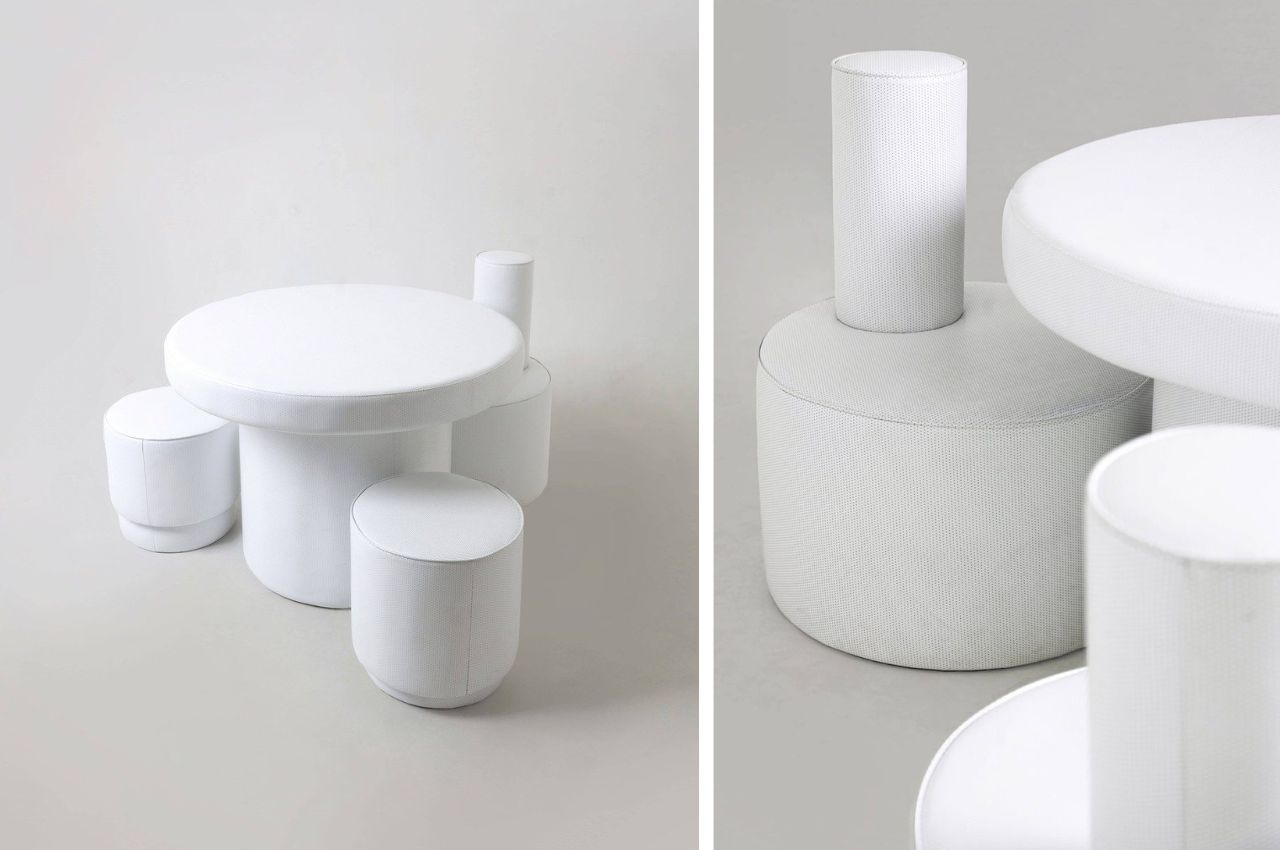
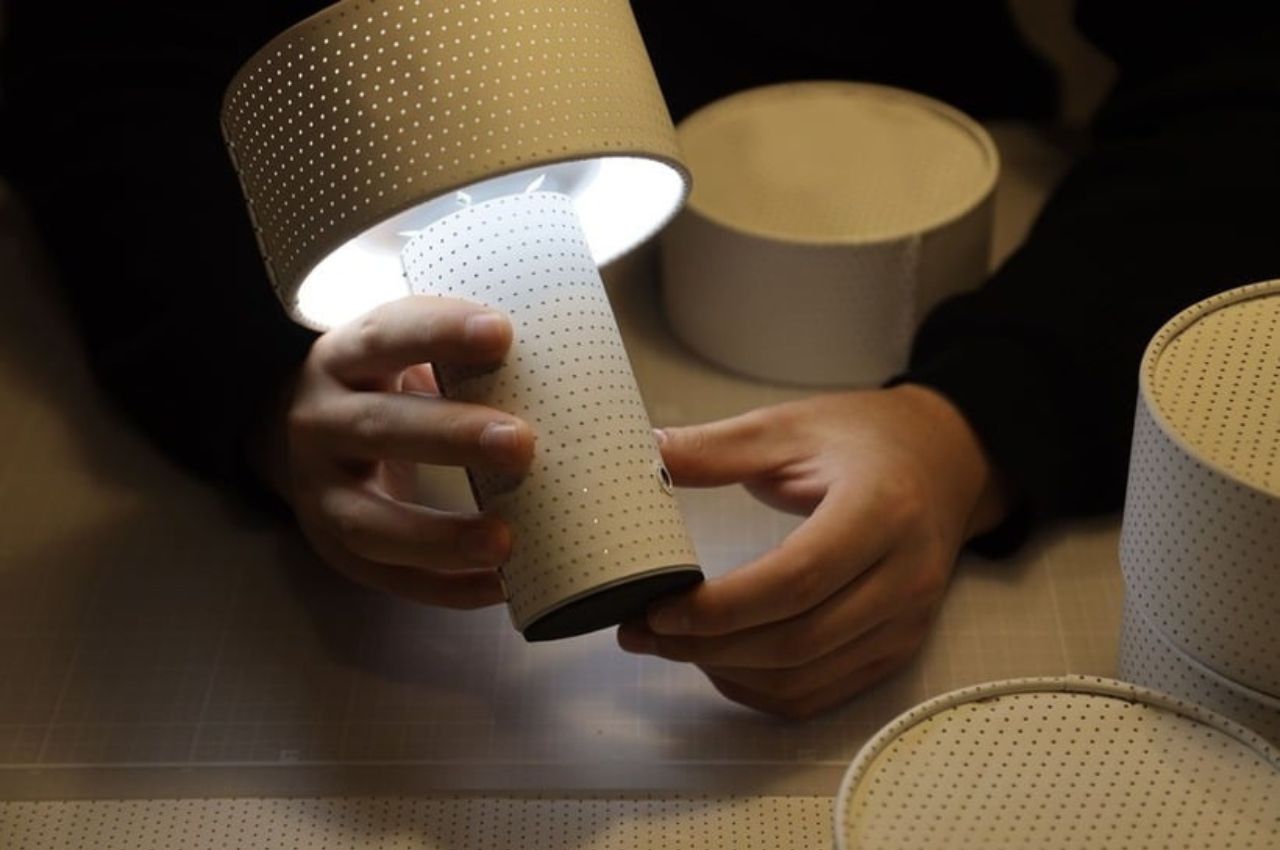
The repurposing of waste movie screens into lighting designs and furniture pieces not only addresses the issue of waste in the entertainment industry but also demonstrates the potential for meaningful utilization across various domains. Kim’s project underscores the exceptional functional and aesthetic qualities of waste movie screens, positioning them as valuable resources for the creation of sustainable and visually striking designs. As the design world continues to grapple with environmental concerns, Haneul Kim’s innovative approach serves as a beacon, pointing towards a future where discarded materials are transformed into objects of beauty and purpose.



